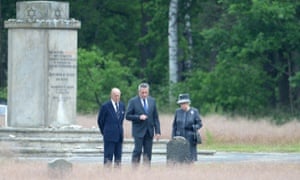
In France, in Tunisia, in Kuwait – horror upon horror, in a single day. It played out like some kind of gruesome auction, each atrocity bidding against the others for our appalled attention. The opening offer came near Lyon, where a factory was attacked and, more shocking, a severed head was found on top of a gate, and a decapitated body nearby. The French president said the corpse had been inscribed with a message.
From the Tunisian resort of Sousse, holidaymakers tweeted terrified pictures from their barricaded hotel rooms, describing how they had fled from the beach after sounds they had assumed were a daytime fireworks display turned out to be the opening gunshots of a massacre. From Kuwait City, as if to top the rival bids, a suicide bomber walked into a mosque packed with 2,000 people and pressed the button that he hoped would send scores to their deaths.
Each of these acts pulled our gaze from the event its perpetrators had surely hoped would trump all others. On Tuesday an Isis video – “snuff movie” would be the more accurate term – showed five Muslim men, each wearing a Guantánamo-style red jumpsuit, packed into a cage and lowered into a swimming pool. State-of-the-art underwater cameras recorded the men’s dying minutes, the thrashing and flailing as they drowned. (I rely here on reports: my small stance against the so-called Islamic State’s propaganda war is to refuse to watch its propaganda.)
What are we to make of these events? What are we to do with what we have witnessed? Experts will look for connections, for common authorship. There will be claims of responsibility. Islamic State has already sought credit for the deaths in Kuwait. There will be analysis aplenty of IS’s position, of the global response, of the nature of contemporary terrorism.
No comments:
Post a Comment